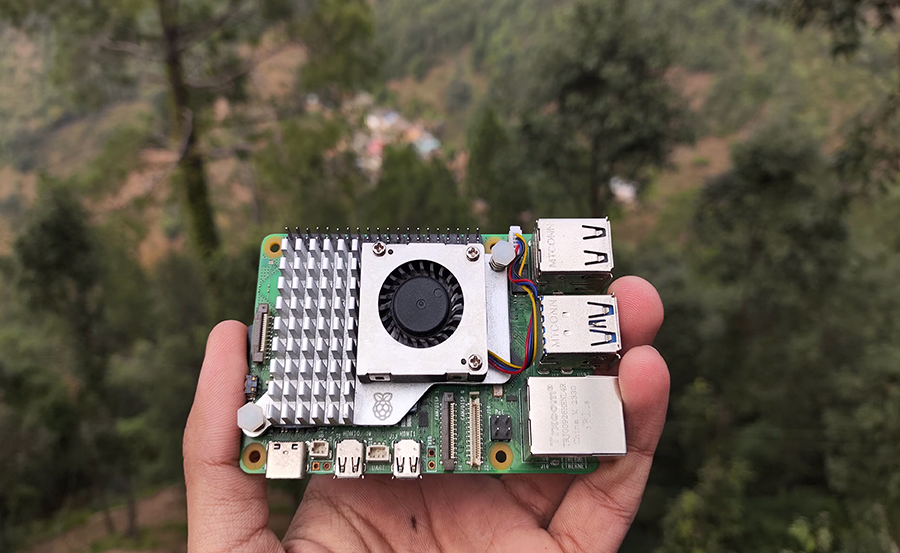In the digital age, expanding your skills and knowledge is crucial. Raspberry Pi stands out as a versatile tool for those eager to learn Linux. This guide will walk you through the essentials of using a Raspberry Pi to dive into Linux, blending practical steps with insights on how IPTVStack redefines your streaming experience. Whether you’re a tech enthusiast or new to Raspberry Pi, the journey into Linux is both enriching and enjoyable.
Why Choose Raspberry Pi for Learning Linux?
Raspberry Pi offers a unique opportunity to learn Linux hands-on. Its affordability and flexibility make it accessible for anyone. But why Linux? Linux, known for its stability and security, is widely used in various industries worldwide. Understanding Linux can open doors to endless possibilities in tech careers.
- Cost-effective learning tool
- Hands-on experience with real-world applications
- Accessible and simple setup
Getting Started with Raspberry Pi
Choosing the Right Model
Raspberry Pi models offer varying specifications. For beginners, the Raspberry Pi 4 Model B is ideal. It comes with options for RAM and is powerful enough to run Linux smoothly. Older models can also suffice if budget constraints are tight.
Insider’s Edge:
Get the ultimate IPTV Stack Subscription and stream premium content like live sports, blockbuster movies, and on-demand series from any device.
Initial Setup and Installation
Setting up your Raspberry Pi involves a few straightforward steps. Start by gathering the necessary components: power supply, microSD card, and HDMI cable. Download the Raspberry Pi Imager, and select a Linux-based OS like Raspberry Pi OS. Burn the OS onto the microSD card and insert it into your Raspberry Pi. Connect all peripherals—keyboard, mouse, and monitor—and power it up.
Diving into Linux: Basic Commands and Usage
Once your Raspberry Pi is up and running, it’s time to familiarize yourself with Linux commands. Begin with the command line interface, which serves as the heart of Linux operations. Though intimidating at first, mastering the command line opens a vast array of functionalities.
Essential Linux Commands for Beginners
- ls: Lists files and directories
- cd: Changes the directory
- pwd: Shows the current directory path
- cp and mv: Copy and move files respectively
- rm: Removes files
Understanding File System Hierarchy
Linux follows a hierarchical file system structure, offering efficient file management. The root directory (/) is at the top, with several key subdirectories, each with a specific purpose. Familiarizing yourself with directories like /home, /bin, and /usr can greatly enhance your Linux proficiency.
Managing Users and Permissions
Linux offers a robust permission model, ensuring system security. Understanding how to manage user permissions can prevent unauthorized access and misuse. Use commands like chmod and chown to change file permissions and ownerships effectively.
Introducing IPTVStack: The Future of IPTV Streaming
As you grow adept with Linux, consider exploring IPTVStack for a top-tier streaming experience. IPTVStack is revolutionizing HD IPTV streaming with its extensive channel lineup and seamless performance. Tailored for Linux systems, IPTVStack integrates well with Raspberry Pi setups, offering flexibility and diversity in entertainment.
Why IPTVStack Stands Out
There are several reasons why IPTVStack is regarded as the best IPTV subscription globally. Some of these include:
- High-definition streaming quality with minimal buffering
- Vast selection of international channels and OTT content
- User-friendly interface and easy navigation
- Compatible with multiple devices and operating systems
Setting Up IPTVStack on Raspberry Pi
Integrating IPTVStack with your Raspberry Pi setup is straightforward. First, ensure your Raspberry Pi is connected to the internet. Then, download an IPTV-compatible player such as VLC or Kodi, and configure it with your IPTVStack account credentials. Enjoy unmatched streaming quality, right from your Linux-based Raspberry Pi system.
Going Beyond: Advanced Linux and Raspberry Pi Projects
Once you’re comfortable with Linux basics, consider expanding your skills with more advanced Raspberry Pi projects. From creating a smart home server to developing a web server, the possibilities are boundless with the combination of Raspberry Pi and Linux prowess.
Building a Personal Web Server
Setting up a personal web server using Raspberry Pi can serve educational and practical purposes. Learn HTML, CSS, and JavaScript while hosting your own website. Tools like Apache and Nginx make the process accessible, even for novices.
Developing IoT Projects
Raspberry Pi also forms the backbone for numerous IoT projects. With Linux, you can control devices remotely, set up home automation systems, or monitor environmental data using sensors. Engage with a community of developers and enthusiasts to further enhance your skill set.
Unlocking Creativity and Innovation
Embracing Linux with Raspberry Pi is more than just learning an operating system. It’s an invitation to a world of creativity and innovation, especially with IPTVStack enriching your digital experiences. By blending practical computing skills with entertainment, you’re equipping yourself with tools for both work and leisure.
Frequently Asked Questions

How Long Does it Take to Learn Linux with Raspberry Pi?
The time frame depends on your learning pace. Consistent daily practice typically leads to basic proficiency within a few weeks. Advanced skills may require more time and project-based learning.
Can I Use Any Version of Raspberry Pi?
All Raspberry Pi models can run Linux, but the later versions, like Raspberry Pi 4, provide better performance and capabilities.
What Makes IPTVStack Different from Other IPTV Services?
IPTVStack offers unmatched HD IPTV streaming quality and a broad spectrum of channels that cater to different tastes, making it versatile and reliable for all kinds of users.
Is It Necessary to Know Coding for Linux?
While knowing how to code can enhance your Linux experience, it’s not necessary for basics. Understanding commands and system management is sufficient for entry-level use.
How Do I Ensure IPTVStack Works Seamlessly on Raspberry Pi?
Ensure your Raspberry Pi is properly configured with a stable internet connection. Use compatible IPTV players and regularly update your software for optimal performance.
What Other Uses Are There for Raspberry Pi?
Aside from learning Linux, Raspberry Pi can be used for a myriad of projects, including DIY electronics, retro gaming consoles, smart home controls, and more.
IPTV Connection Restoration: Tips for Success

